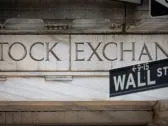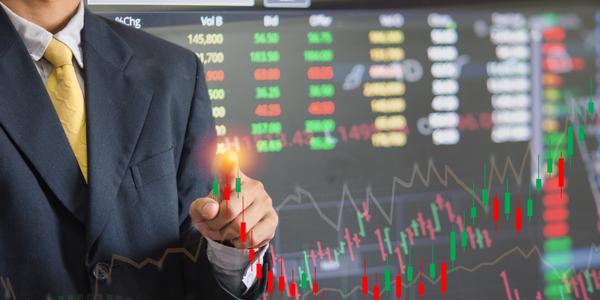Introduction
U.S. equity funds have recently seen a significant inflow of assets, marking a notable recovery from prior market sell-off activity. This surge in investor interest is driven by several key factors, including a cooler-than-expected inflation report, the avoidance of a potential government shutdown through a stopgap funding bill, and what has been referred to as a "Santa Claus" rally effect at year-end.
According to data from LSEG Lipper, equity funds have demonstrated resilience over multiple weeks, with net inflows consistently growing. This trend has continued into the week ending December 25, further solidifying investor confidence in navigating challenging macroeconomic conditions.
Background Context
The Recent Macroeconomic Landscape
The U.S. economy has faced a series of headwinds throughout 2023, including inflationary pressures and geopolitical uncertainties. However, several key pieces of macroeconomic data have provided some level of stabilization for financial markets. Notably, the release of the U.S. government’s December inflation report has been a critical factor in shaping investor sentiment.
The Role of Government Policies
The week-to-week fluctuations in equity fund inflows are closely tied to policy developments and legislative actions within Washington D.C. A major factor influencing market dynamics during this period has been the potential for a government shutdown, which could have severely impacted federal operations and public services.
Key Drivers of Recent Equity Fund Inflows
1. Cooled Downward Pressure from Inflation Data
The December inflation report provided crucial insights into the state of the economy. The price index for personal consumption expenditures (PCE) rose only marginally, at a pace that was below market expectations. This data has been interpreted as a pause in the broader trend of accelerating inflation, which had previously Concerned investors and policymakers.
Impact on Market Sentiment
The subdued inflation report has bolstered optimism among markets about the potential for further monetary easing by the Federal Reserve. This sentiment has translated into increased participation in U.S. equity funds, driven by the expectation that policy normalization will follow if inflation trends remain benign.
2. Avoidance of a Government Shutdown
A stopgap funding bill has been instrumental in averting potential disruptions to federal operations and public services. The government shutdown risk had previously created uncertainty about the availability of critical services and the ability to fulfill essential functions, which could have weighed on market confidence.
Market Reaction
The announcement of a funding bill has been met with relief by investors, particularly amid the broader context of economic instability elsewhere in the global economy. This has contributed to increased inflows into U.S. equity funds as risk assets have tended to perform well during times of heightened uncertainty about government operations.
3. The "Santa Claus" Rally Phenomenon
The term "Santa Claus rally" is often used to describe a phenomenon where markets experience strong performance in the final week of the year, coinciding with reduced trading volumes and favorable investor sentiment. This effect has been particularly pronounced in the U.S., where market activity typically slows down at year-end due to end-of-year preparations.
Market Dynamics
The rally effect has played a significant role in recent equity fund inflows. As markets enter the final week of 2023, participants have sought refuge in risk assets amid ongoing macroeconomic challenges, leading to heightened demand for U.S. equity funds.
Sector-Specific Performance
In addition to the overall market performance, individual sectors within the equity funds have exhibited varying degrees of participation and outperformance.
1. Large-Cap Funds: Dominant Participants
Large-cap U.S. equity funds have emerged as a primary driver of recent inflows. Investors have been drawn to these funds in large volumes, with net inflows exceeding $31.67 billion for the week ending December 25. This outperformance has been driven by strong performance across key sectors such as technology, financials, and consumer discretionary.
Sub-Sector Performances
Within the large-cap segment, technology stocks have particularly benefited from a rebound in growth opportunities following a prolonged period of heightened regulatory scrutiny. Financials, on the other hand, have been supported by positive earnings reports and expectations for continued strength in economic activity.
2. Small-Cap and Mid-Cap Funds: Relative Performance
In contrast to large-cap funds, small-cap and mid-cap equity funds have generally seen lower levels of participation this week. While these segments have not been the primary focus of investor sentiment, they remain important contributors to overall market performance in the long term.
Market Sentiment
The relative underperformance of smaller caps can be attributed to a combination of factors, including limited liquidity and the influence of broader market trends that favor large-cap names.
Bond Market Dynamics
In parallel with equity fund inflows, there has been notable activity in the bond market. The performance of fixed-income securities has been influenced by macroeconomic conditions as well as expectations about future monetary policy.
1. Rising Rates and Bond Yields
The week ending December 25 has seen heightened interest rates across global markets, driven by Federal Reserve tightening cycles and geopolitical developments. In the U.S., this has translated into an increase in bond yields, reflecting reduced demand for fixed-income instruments.
Impact on Equity Funds
Higher interest rates have created a favorable environment for equity funds, as investors seek to shift their allocations toward higher-return risk assets that offer better compensation for bearing interest rate risk.
2. Fixed-Income Fund Performance
Net inflows into U.S. bond funds have been modest compared to the outperformance observed in the equity sector. This relative underperformance has been driven by a combination of factors, including reduced demand for fixed-income instruments due to higher yields and expectations about future economic conditions.
Conclusion
The recent recovery in U.S. equity fund inflows reflects a complex interplay of macroeconomic factors, policy developments, and investor sentiment. While the full implications of these trends will be reflected in market performance over the coming months, they provide a glimpse into the resilience of U.S. financial markets under challenging conditions.
As 2023 winds down, participants in equity funds are likely to continue to shape market dynamics based on ongoing developments in inflation, policy, and global economic conditions. The ability of these markets to weather headwinds while maintaining investor confidence will be a key determinant of their long-term performance.



